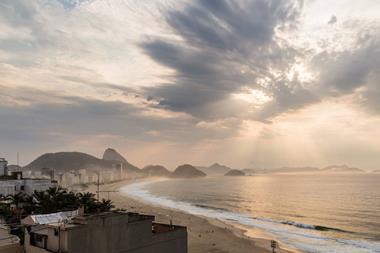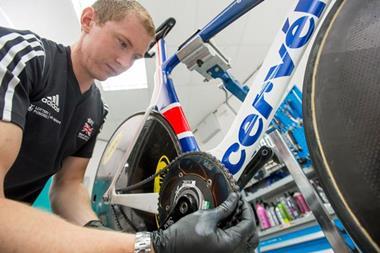Chemistry underpinning rapid change in pool’s colour remains murky

Almost overnight the Olympic diving pool in Rio turned from clear blue to cloudy green causing consternation among divers such as Tom Daley and Daniel Goodfellow and baffling organisers and pool maintenance.
Rio Olympics spokesman Mario Andrada announced on 10 August that algae were to blame, but later that day officials changed their minds and blamed a fall in alkalinity. Algae turn pools cloudy and green but the neighbouring swimming pool remained clear blue. The diving pool’s higher temperature might underpin that difference. An algal bloom can be treated by shocking the water with ‘chlorine’ (sodium hypochlorite) overnight and letting the filters do their work.
Unfortunately, it is possible to overshock a pool and some observers suggested that it wasn’t algae but a chemical problem that had led to the green hue. In order to preclude an algal bloom in the warm and humid open-air conditions, the team had shocked the pool and caused formation of copper and iron oxides from the mineral content of the water. A chemical process seemed to fit the short colour-change timescale better and also explained why the neighbouring swimming pool, which had presumably not been “shocked”, remained unaffected. But this doesn’t explain the cloudiness.
University of Cambridge scientist Richard Gymer, who has been a volunteer pool technician at an open-air pool, is well aware of how difficult it can be to maintain water quality in a pool. ‘Too much chlorine is unpleasant and damages swimming costumes,’ Gymer says. ‘Too little and it doesn’t kill pathogens and algae. Outdoor pools are particularly prone to problems. I would have been very embarrassed to have had this happen if I were running that pool, and would double-check that I was reading the chlorine levels correctly, with fresh testing-tablets.’
However, at the time of writing, Reuters news agency was reporting that the international swimming federation (FINA) was blaming a lack of appropriate chemicals in the water treatment system leading to a fall in alkalinity. Again, this does not explain the cloudiness and the culprit may well yet prove to be algae.
One thing is certain, the maintenance team did not use an additive to betray any diver who surreptitiously urinated in the pool. Whether or not chemistry or biology is the problem, chemistry will be the solution.












No comments yet